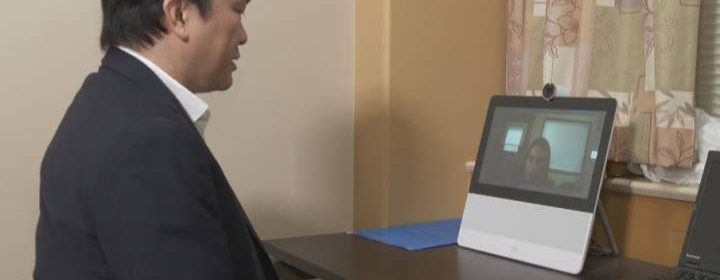Fraser Health goes high tech, links hospitals by video

Imagine being able to see a doctor or a specialist without ever having to leave your home.
That’s the long-term vision for Fraser Health, which has already begun integrating real-time video conferencing technology to connect hospitals to one another and to community mental-health centres.
Under the new initiative, the health authority is using video conferencing tools to connect specialists at Royal Columbian Hospital with cardiac patients at Surrey Memorial and Abbotsford Regional Hospitals.
The same tools are being used to connect mental-health patients at Royal Columbian with community mental-health teams before discharging them to help ensure a smoother transition into the community.
“This new technology is already making a positive difference in the lives of people living in rural and remote areas of B.C.,” said Minister of Mental Health and Addictions Judy Darcy.
“Now, tele-mental health will enable patients at Royal Columbian to connect directly to the ongoing support they will need after they leave the hospital and are back in the community.”
Dr. Anson Koo, Fraser Health’s program medical director of mental health and substance use, said the long-term goal of the program is to one day connect hospitals to doctors’ offices, and eventually directly to patients in their own homes.
“It’s one of our top priorities in our health authority to incorporate new technology into the health-care system. And the reason for this is our population is exploding and we need to find innovative ways to meet the demand for service that’s convenient for patients and also that takes into account the resources of our health authority,” he said.
Koo said developing the tools will allow Fraser Health to save money and time while expanding services.
He pointed to the example of a patient that needs to be transported between two different hospitals to receive specialist care, an exercise that puts stress on both resources and the patient.
Koo said rolling the system out further to doctors’ offices and peoples’ homes could also make health care both more convenient and comfortable for patients.
“We know that for many patients, they’re able to be much more open because they’re comfortable in their natural setting. They’re at home, in their living room, in their home office, talking to a doctor,” he said.
“What we’ve heard over and over is, ‘Look, after the first couple of times where it’s a little bit different, I prefer this. This is the way I want my appointments.’”
Koo said there are still data security issues to work out before the average person could engage in virtual visits with their doctors through mobile devices like smartphones and tablets, but said he doesn’t believe that future is far off.
Source: Read Full Article